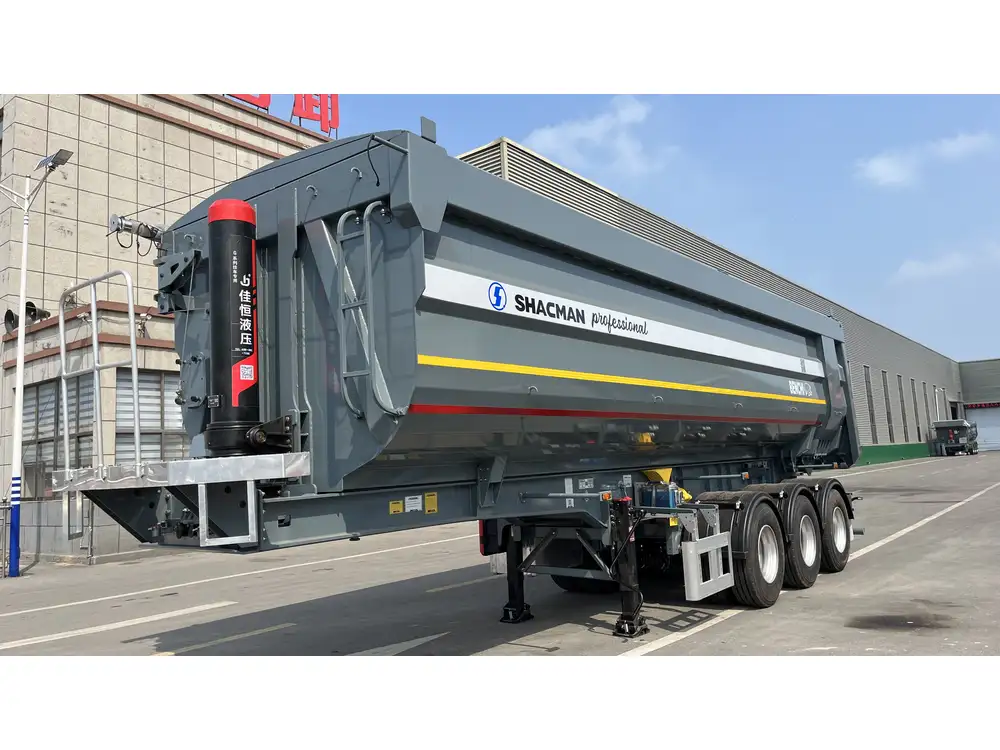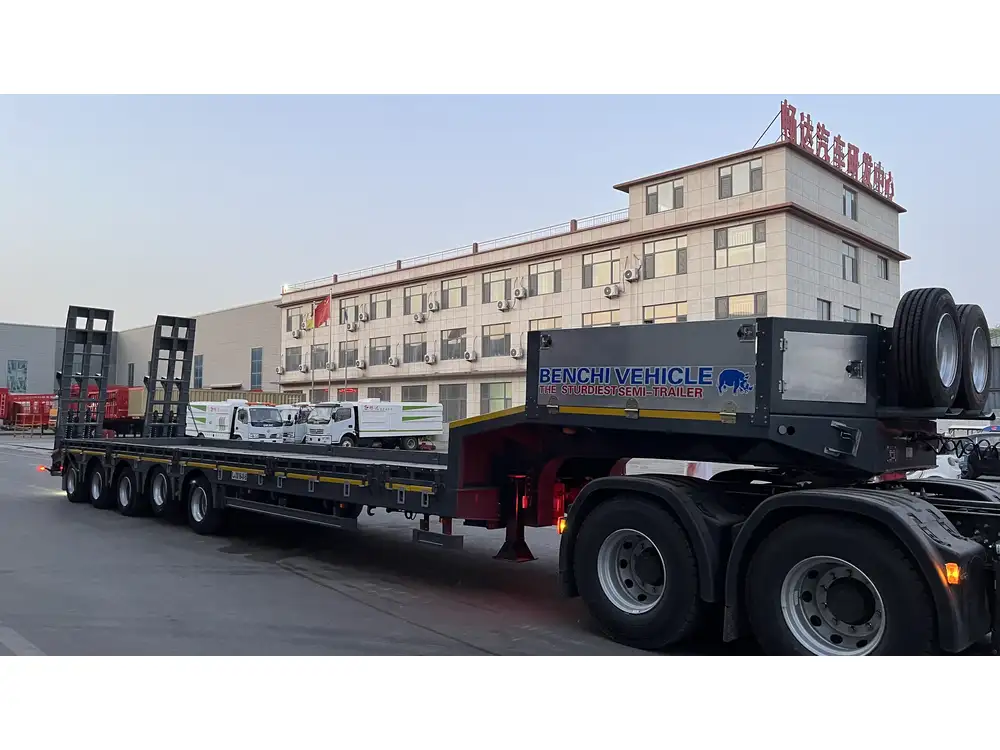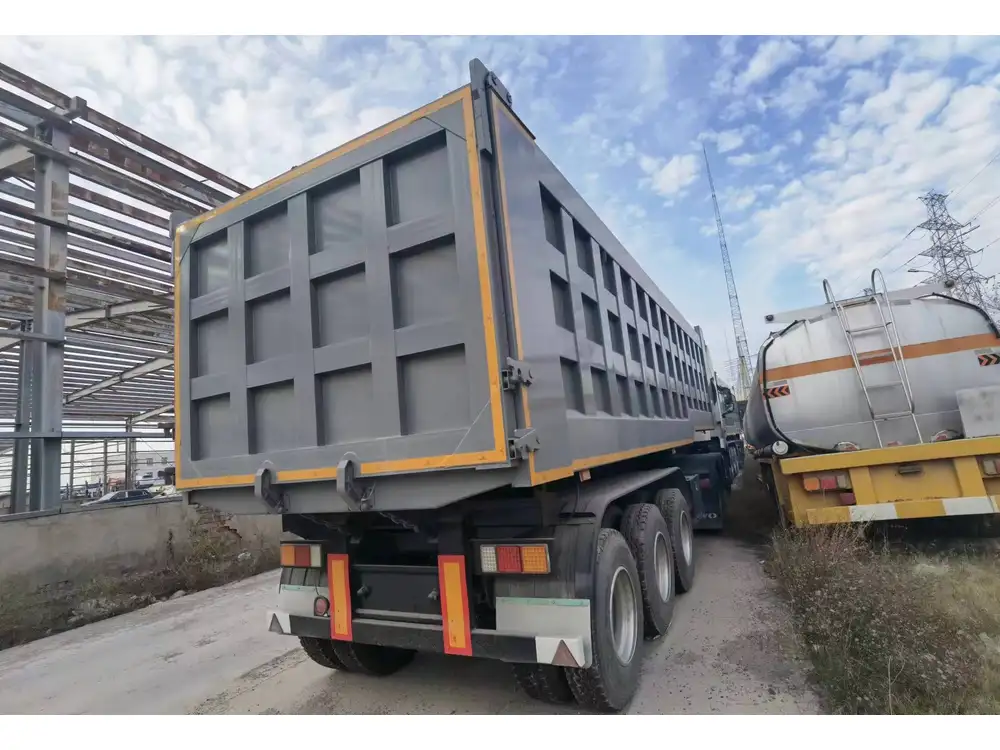When it comes to logistics and transportation, understanding the capacity of trailers is critical for businesses involved in shipping, freight forwarding, and distribution. The ability to optimize space can significantly reduce costs and improve efficiency. In this article, we will dissect the intricacies of how container sizes relate to trailer capacities, including the factors that influence loading and the best practices to adopt for maximizing cargo space.
Understanding Trailer Types and Their Capacities
Different Trailer Configurations
Trailers come in various types, each designed for specific functions and load types. Here we will explore the most common configurations:
| Trailer Type | Length | Height | Width | Typical Use Cases |
|---|---|---|---|---|
| Standard 20ft Trailer | 20 – 24 ft | 8.5 ft | 8.5 ft | Container transport in domestic markets |
| Standard 40ft Trailer | 40 – 45 ft | 8.5 ft | 8.5 ft | Intermodal transport and bulk shipping |
| High Cube 40ft Trailer | 40 – 45 ft | 9.5 ft | 8.5 ft | Increased volume for lighter goods |
| Flatbed Trailer | 48 – 53 ft | Variable | 8.5 ft | Heavy equipment and oversized loads |
| Refrigerated Trailer | 40 – 53 ft | 9.5 ft (avg) | 8.5 ft | Temperature-sensitive goods |

Container Sizes and Specifications
Understanding how many containers fit in a trailer begins with familiarizing oneself with standard container dimensions. Here’s a concise comparison:
| Container Type | External Dimensions | Internal Dimensions | Capacity |
|---|---|---|---|
| 20ft Standard Container | 20 ft x 8 ft x 8.5 ft | 19.4 ft x 7.7 ft x 7.9 ft | 33 cubic meters (1,172 cubic feet) |
| 40ft Standard Container | 40 ft x 8 ft x 8.5 ft | 39.5 ft x 7.7 ft x 7.9 ft | 67 cubic meters (2,372 cubic feet) |
| 40ft High Cube Container | 40 ft x 8 ft x 9.5 ft | 39.5 ft x 7.7 ft x 8.9 ft | 76 cubic meters (2,694 cubic feet) |
| 45ft High Cube Container | 45 ft x 8 ft x 9.5 ft | 44.4 ft x 7.7 ft x 8.9 ft | 86 cubic meters (3,034 cubic feet) |
How Many Containers Fit in a Trailer?
Standard Calculation and Estimates
The number of containers that can fit in a trailer largely relies on the dimensions of both the trailer and the specific container type used. For instance:
Standard 20ft Trailer:
- Capacity: Typically accommodates 1 x 20ft container comfortably, while certain configurations can allow partial loading for smaller items.
Standard 40ft Trailer:
- Capacity: Generally fits 2 x 20ft containers or 1 x 40ft container.
High Cube 40ft Trailer:
- Capacity: Designed for 1 x 40ft high cube container specifically, but might also accommodate some lighter cargo on top of a lower cargo unit if using stacking methods.
Flatbed Trailers:
- Configuration varies. A 48ft flatbed can edge towards 3 x 20ft containers, depending on how the weight is distributed.

Considerations Beyond Dimensions
Determining how many containers fit in a trailer extends beyond mere measurements; several interplaying factors influence the effective loading capacity:
Weight Limitations:
- Each trailer has a Maximum Gross Vehicle Weight (MGVW). Exceeding these limits leads not only to regulatory issues but also compromises safety.
Load Distribution:
- Proper load balance is essential for safe transportation. Weight should be evenly distributed to avoid tipping during transit.
Height Restrictions:
- When using high cube containers or stacking them, one must consider highway height limitations, typically around 13.5 ft to 14 ft in the U.S.
Accessibility and Loading Techniques:
- The process of loading and unloading is crucial. Using cranes or forklifts safely while calculating loading patterns can affect how much can realistically fit.
Practical Examples of Trailer Load Optimization
To illustrate the above points, here is a breakdown of loading scenarios to optimize trailer use effectively:
Two 20ft Containers in a 40ft Trailer:
- If you are shipping two standard 20ft containers in a 40ft trailer, ensure that the total weight does not exceed the trailer’s MGVW.
Mixing Container Types:
- Occasionally, businesses may need to mix cargo types. For instance, placing one 40ft container and utilizing pallets or smaller packages around it can maximize space while adhering to weight and size regulations.
Flatbed Configurations:
- Loading machinery onto flatbed trailers while retaining room for smaller 20ft containers beside them, optimizing both vertical and horizontal space.
Calculating Volume Efficiency
Beyond counting containers, measuring the volume efficiency of what you are transporting can lead to significant cost savings. Consider the following:
- Example Calculation for a 40ft High Cube Trailer:
- Volume capacity: 76 cubic meters.
- 40ft High Cube’s usage for immediate cargo: Calculate volume filled versus empty space remaining.
- If using two 20ft containers: ( 2 \times 33 \text{ m}^3 = 66 \text{ m}^3 ) filled.
- Efficiency Percentage Calculation:

Best Practices for Maximizing Trailer Capacity
To guarantee that your trailers are used to their full potential:
Plan Loads Actively: Create a detailed loading plan before the cargo arrives. Understand the optimal way to stack and arrange containers even before arriving at the loading dock.
Utilize Technology: Invest in logistics and cargo management software that can assist in tracking loads and optimizing loading patterns.
Regular Maintenance: Ensure trailers are regularly maintained and serviced. Compromised trailer integrity can disrupt loading potential and lead to losses.
FAQs: Addressing Common Concerns
1. Can I mix container sizes in one trailer?
Yes, mixing container sizes is common, especially in flatbeds or when utilizing specialized containers for specific cargo. However, always ensure weight distribution and overall load capacity limits are respected.

2. How do I calculate if my cargo exceeds trailer limits?
You plan by thoroughly measuring the combined weight of the containers, packing materials, and any additional cargo, ensuring it does not exceed the specified weight limits of the designated trailer.
3. What are some common mistakes to avoid when loading trailers?
Avoid overloading, neglecting weight distribution, not accounting for height limitations, and failing to secure loads adequately. Booking insufficient time for loading can lead to increased costs.
4. What industry standards must I consider when transporting containers?
Regulatory bodies like the Federal Motor Carrier Safety Administration (FMCSA) in the U.S., as well as international agreements such as SOLAS, set standards that must be adhered to for safe transportation.

5. Is training necessary for loading and unloading containers safely?
Yes, training staff on safe loading techniques, utilizing equipment correctly, and understanding the principles of load distribution is crucial for preventing accidents and improving efficiency.
Conclusion
Navigating the complexities of trailer capacities and container logistics requires careful thought, planning, and an understanding of both physical and regulatory parameters. With the right insights and practices, businesses can optimize their shipping processes, reduce costs, and enhance operational efficiency. As we’ve explored in this comprehensive guide, knowing how many containers fit in a trailer isn’t merely a numerical answer—it’s an essential aspect of achieving logistical excellence in today’s dynamic transport landscape.



